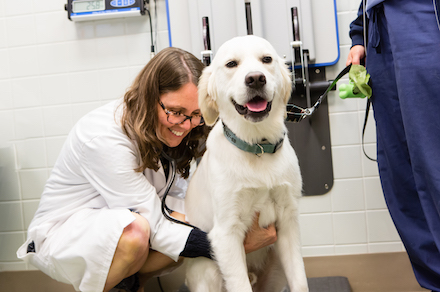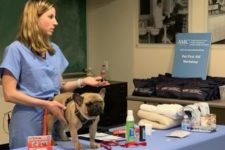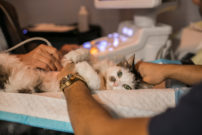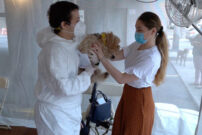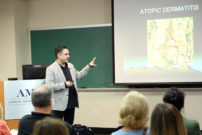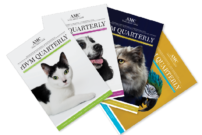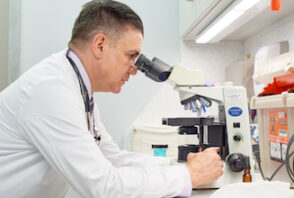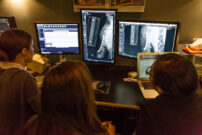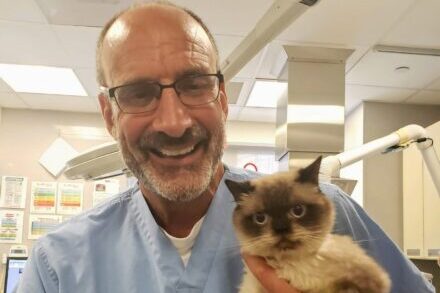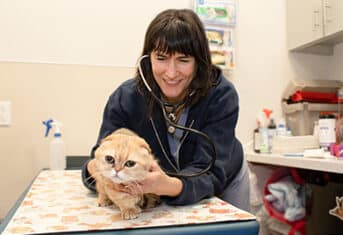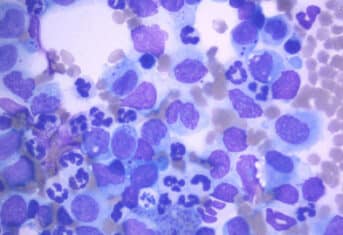Doc, My Bison is Lame: A Veterinarian’s View from Yellowstone

Doc, My Bison is Lame: A Veterinarian’s View from Yellowstone
As some readers may have noticed, I have not been answering comments posted on Tales from the Pet Clinic over the past couple of weeks. Traveling in the remote national parks of Wyoming and Montana, I have been cut off from electronic communications. Before I left The Animal Medical Center, one of my clients wished me a “good, sick-animal-free vacation.” But despite the wonderful wild animals in our national parks, I somehow couldn’t seem to avoid thinking about sick animals.
On our drive into Yellowstone National Park, we encountered a large herd of bison grazing in the Hayden Valley and felt fortunate a few herd members chose to cross the road within the range of our camera lens. That’s when I noticed him, a large male bison moving more slowly than the rest of the herd across the two-lane highway. Watching him walk, I realized he was severely lame in his right hind leg and could not put his hoof flat on the ground.
Remembering that bison are the largest and one of the most dangerous land mammals in North America, I wondered who would take care of this one.
Our American national parks have been set aside to protect and preserve the wilderness. Protecting and preserving the wilderness of Yellowstone requires an intact ecosystem. Yellowstone, and other national parks as well, maintains ecological balance by allowing the life cycle of the resident flora and fauna to progress without human intervention. As hard as it was for me to watch a sick animal, I know the bison’s life and death will contribute to maintaining the delicate ecological balance of this very special place.
Hiking along the Pelican Valley Trail, I saw a sign for visitors bringing their horses and donkeys into the park. The sign alerted riders to the park rule requiring equines to have a negative Coggin’s test within the past 12 months. Veterinarians use the Coggin’s test to diagnose equine infectious anemia (EIA), colloquially known as swamp fever. This disease affects only equines, is caused by a retrovirus related to HIV, and results in miscarriages in mares and chronic incurable anemia. I was curious when I saw the sign as to why equine infectious anemia was a concern. I soon realized why. In addition to elk, bison, moose, and mule deer, I quickly found out Yellowstone is also home to an enormous population of mosquitoes and biting flies. These insects can transmit the EIA virus from a sick to a healthy equine and so as not to spoil anyone’s trip to Yellowstone, all equines must test negative for the EIA virus.
Just like in Rodgers and Hammerstein’s Oklahoma! where the cowman and the farmer disagreed over fences, there is tension between the Montana ranchers and the park rangers over Yellowstone’s free ranging bison and elk herds. A disease found in Yellowstone bison and elk called brucellosis spreads from infected bison and elk to cattle when the bison and elk wander out of Yellowstone coming into contact with cattle in the surrounding ranches.
For decades, veterinarians have worked in cooperation with the United States government and cattlemen to eradicate brucellosis from cattle in the U.S. because of the health and economic impact of the disease on cattle, cattle farmers and the public; however, brucellosis in the free ranging wildlife of Yellowstone threatens the brucellosis-free status of cattle. The rangers’ goal of maintaining free ranging herds creates tension with ranchers working to eradicate brucellosis.
So that was my wonderful, restful, sick-animal-filled vacation for 2011. What did you and your animal friends do over the summer?
________________________________________________________
This may also be found in the “Tales from the Pet Clinic” blog on WebMD.com.
For over a century, The Animal Medical Center has been a national leader in animal health care, known for its expertise, innovation and success in providing routine, specialty and emergency medical care for companion animals. Thanks in part to the enduring generosity of donors, The AMC is also known for its outstanding teaching, research and compassionate community funds. Please help us to continue these efforts. Send your contribution to: The Animal Medical Center, 510 East 62nd Street, New York, NY 10065. For more information, visit amcny.gbtesting.us. To make an appointment, please call 212.838.7053.





